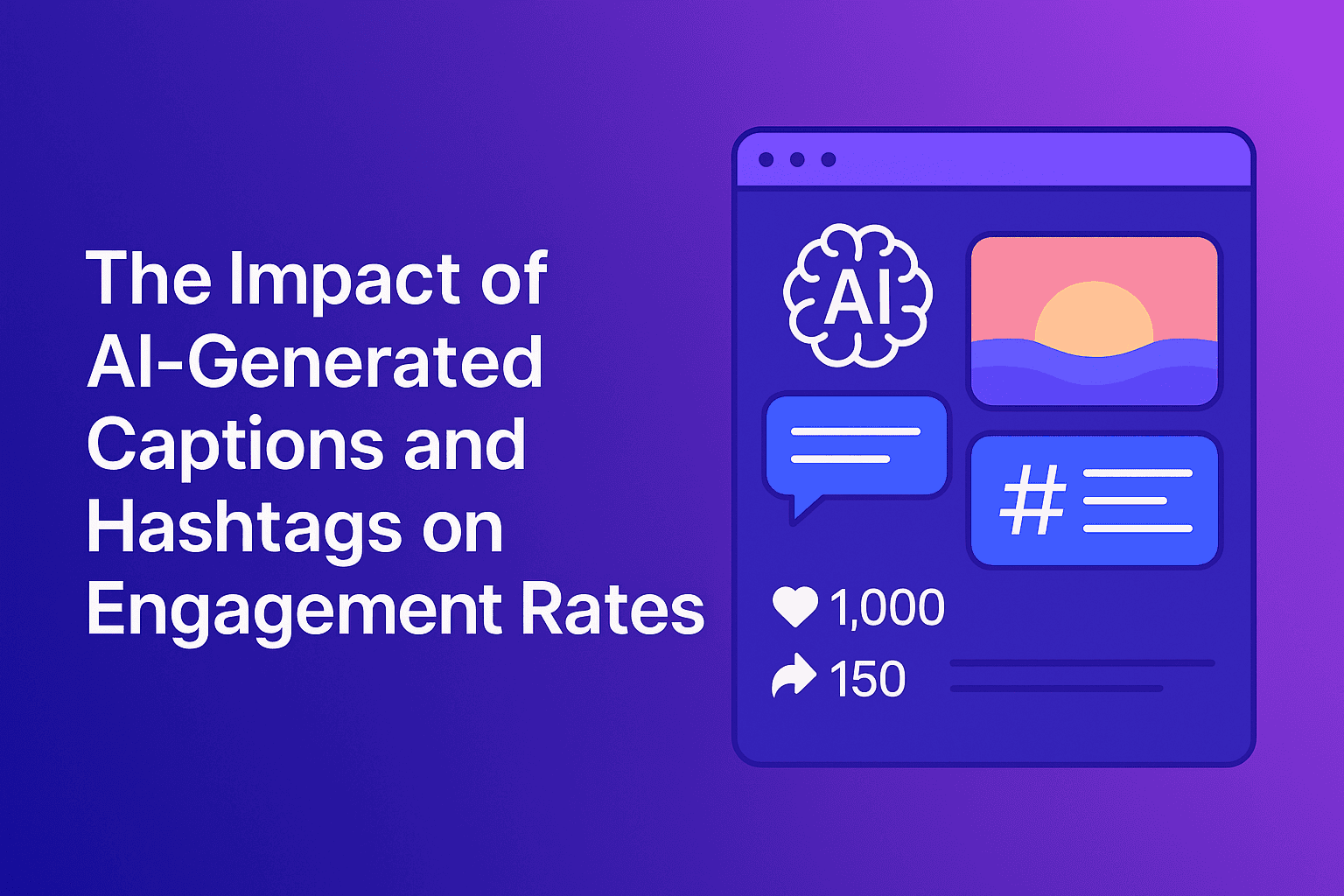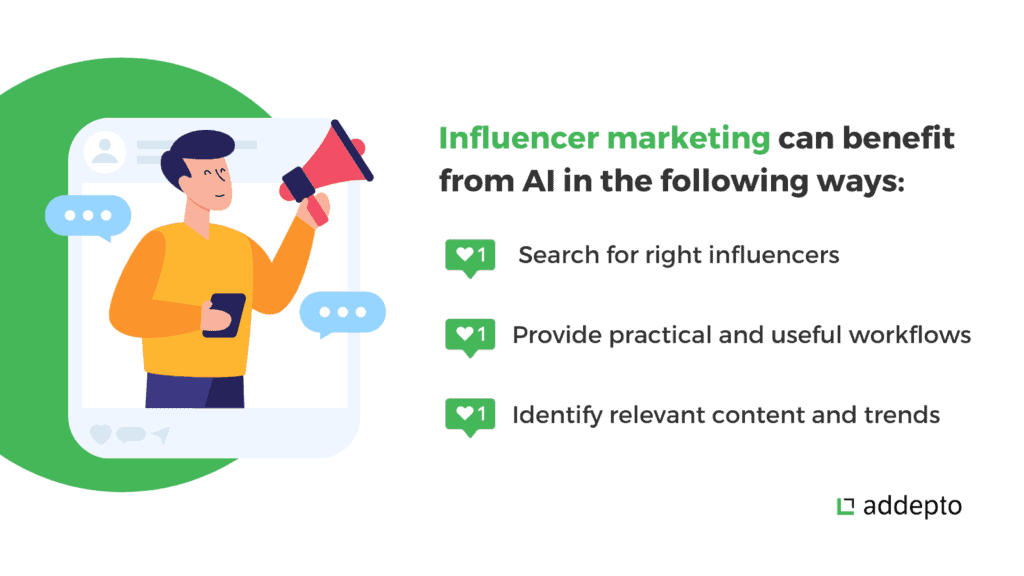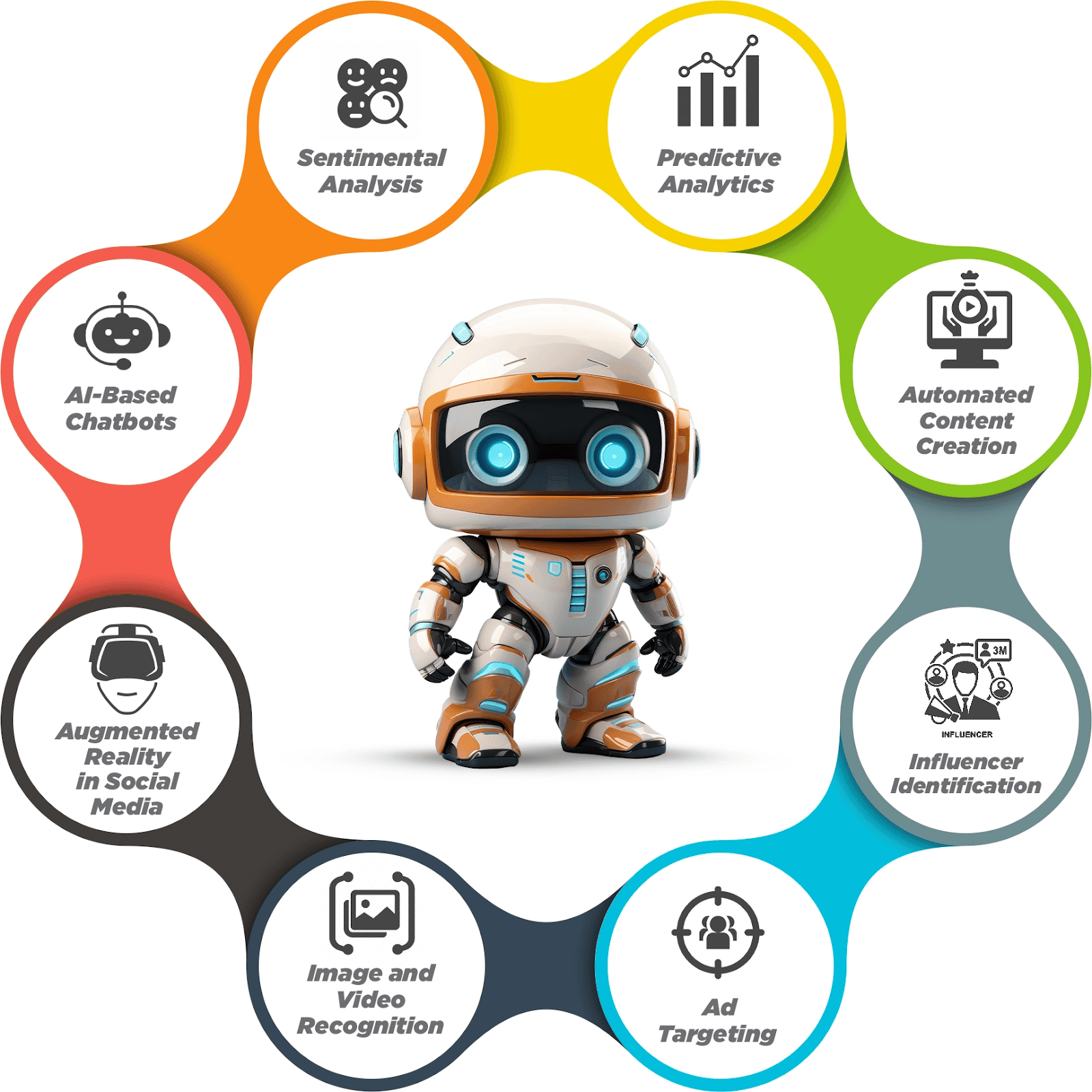We live in a world where Artificial Intelligence (AI) technology is changing the world of online content creation and sharing. AI-generated captions and hashtags are becoming increasingly popular on every social media platform, including Instagram, Twitter, LinkedIn, and Tik Tok. Their primary goal is to streamline the work of content creators and optimize engagement.
Captions and hashtags are significant to a social media post as they directly affect its performance. As mentioned before, captions help a user understand and hook them into the content, while hashtags allow them to search for content. Both spell out the other and help to improve the engagement metrics of likes, shares, comments, and even clicks-through rates.
This blog explores how AI-generated captions and hashtags impact engagement rates. We will compare AI-generated content with human-created alternatives, analyze case studies, and share best practices for businesses and creators aiming to boost their social media performance.

Understanding AI-Generated Captions and Hashtags
AI algorithms use image and text analysis along with user interaction data to generate relevant captions and hashtags. These tools are intended to reduce the burden of repetitive manual work by offering fully crafted and optimal content ready for posting.
AI tools that are commonly used by people include ChatGPT, Jasper, and Lately. ChatGPT writes text which is contextually relevant to prompts given to it. Jasper writes captions by filling in voice templates and brand templates, while Lately makes new posts by reviewing content that performed well in the past.
The rise in the adoption of AI software development services in content creation coincides with advanced technology workflows. Automation technologies help maintain a content calendar and reduce manual work. Firms with a huge volume of posts to manage are adapting AI in their workflows so that standards and relevancy are met while achieving maximum efficiency. This trend reflects the broader surge in machine learning adoption across industries, where companies are increasingly investing in advanced models to enhance business performance.
AI captioning systems can use visual recognition algorithms to create automatic descriptions for images or videos. For example, an AI can analyze an image of a clothing product and describe the item including emotional and descriptive adjectives while fashionably tagging it all within seconds. With every update made to the AI models, content generation will be more aligned with the information provided which will, in turn, mitigate the challenge of providing irrelevant captions and tags.
Use Case: A travel blogger can upload a photo of a beach destination, and AI can generate captions based on the location, mood (e.g., “relaxing getaway”), and trending tourism hashtags. Most importantly, it saves bloggers invaluable time while maximizing the chances of appearing on relevant discovery feeds.
The Psychology Behind Engagement Rates
Engagement rate is the metric that calculates the proportion of users that interact with the content posted on a given platform by liking, sharing, commenting, or even clicking on it. Engagement rate is very effective for determining the level of interest an audience has in the given content and how effective it is.
Captions with narrative have a greater probability of users engaging with the post and caption. Conversations may be instigated or users may share them if a caption is well crafted. Increasing the ability of content to reach users beyond a person’s followers is called hashtag follow. Hashtags also serve the purpose of discovery.
Users interact more frequently with content that feels customized to them from a psychological standpoint. Emotionally charged content, or content that is deeply personally relevant, captures users’ attention more. To an extent, AI tries to replicate this with behavioral models through audience research, trending topics, and parsing sensitive language patterns. The interests of the target audience must be aligned with the content in order for it to succeed.
The psychological triggers that affect engagement include FOMO (fear of missing out), social proof, and even reciprocity. For example, captions that imply high engagement or inclusivity such as “Join the thousands who are loving this” or “Don’t be the only one to miss this limited drop!” are likely to drive interaction. These heuristics and psychological cues could be pre-loaded into AI systems.
More sophisticated AI systems have started to customize captions based on users’ engagement activities. This type of personalization, hyper-personalization advances the technology so that a single image can be captioned depending on one’s behavioral and demographic profile, making emotional targeting extremely effective.
AI vs. Human-Generated Captions and Hashtags: A Comparison
The advantages of AI content creation is rather self-evident when speaking about speed, consistency throughout, scalability, and how uniform everything is. Marketers and business professionals no longer must painstakingly type each and every single phrase since AI models can now parse massive datasets and identify which words and hashtags have done well in the past. Therefore, content can be created not just for optimum reach, but can also be in tune with what is trending.
Pros of AI-Generated Content:
- Cost-effective and efficient due to time savings
- Maintains brand voice and style across posts
- Suggests trending and high-visibility hashtags
The creative and emotional intuition of a human writer cannot be replaced by AI alone. Even though AI performs optimally, human creativity remains a core aspect of content on any platform. Contextual understanding and cultural humor, empathy, and nuance are sophisticated elements absent in AI captions but readily available in human-generated captions.
Cons of AI-Generated Content:
- May lack emotional depth and creative flair
- Can misinterpret context or cultural nuances
- Less flexible with emerging or niche trends
Traditional marketing, or human-generated content, take a greater amount of time and energy; however, creators can respond instantly to trends or cultural moments, as well as audience needs. For example, an actual person can write a caption for a given viral meme or incorporate humor based on current events, things AI, for the most part, cannot perform.
In reality, a combination of methods works best. With the advancement of AI, many content divisions are adopting the practice of having AI draft initial versions which are then polished for tone, clarity and emotional resonance by human editors. This approach balances brand voice with emotionally intelligent content.
Perhaps more important is the need for such collaboration in the healthcare, education and activism sectors that require accuracy with sensitivity to tone and context. In such spaces, AI has limited use, and cannot replace the human touch.
AI’s Role in Influencer Marketing

Source: addepto
AI technologies have become vital for an influencer’s daily post management. Micro-influencers apply AI for hashtag generation to enhance visibility, whereas macro-influencers use AI to ensure a cohesive brand personality throughout various social media channels.
Examples include:
- Jasper for automated captioning tailored to brand tone
- CapCut’s AI-powered video editing and subtitle generation
- AI tools for monitoring follower sentiment and suggesting optimal posting times
This change allows influencers to remain competitive in an overwhelmingly saturated market as they do not need to sacrifice quality content during scaling. to achieve.
The best results often come from combining AI’s analytical strength with human creativity.
Case Studies & Industry Data
A number of marketers report improved audience engagement after incorporating AI tools into their social media strategy.
For example, after an e-commerce brand using Lately automated its captions using top-performing historical posts, the brand reported a 30 percent increase in click-through rates. Influencers utilizing Jasper for daily content creation reported enhanced engagement consistency when the tool was tailored to their specific niche.
A HubSpot report reveals AI-driven social media tools increased engagement rates by 21 percent for marketers compared to manually-operated methods.
Additionally, Social Media Examiner research reveals that posts containing AI-generated hashtags saw an impression boost of 15-20 percent, particularly when the hashtags were tailored to specific niches instead of broad categories.
These statistics illustrate that when used strategically, AI can enhance active participation which improves engagement among customers.
A 2023 Hootsuite survey indicated that 57% of content marketers who use AI tools save at least 6 hours per week on content creation. That time can then be reallocated to audience interaction, customer service, or campaign strategy, further increasing engagement indirectly.
An education-focused non-profit used AI to test multiple caption variants for fundraising campaigns. A/B testing powered by AI helped identify the most effective emotional appeal, resulting in a 2.4x increase in donations per post.
Best Practices for Using AI in Social Media Engagement
To maximize efficiency from AI-generated captions and hashtags, adhere to these guidelines:
1. Always Review Before Posting: AI is helpful in the workplace, but it’s not flawless, so double-check all content for brand compliance before posting.
2. Use AI as a Support Tool: Let AI handle the heavy lifting, but add human input for creativity and emotional nuance.
3. Select the Right Tools: Ensure the tools you select have some form of adaptability and educational components, like:
- ChatGPT for conversational captions
- Jasper for brand-consistent writing
- Lately for analytics-driven automation
4. Monitor and Optimize: Analyze what piece of content has the most success from your AI generated content, then adjust your strategy based on analytics and inputted data back into the AI tool for optimized performance.
5. Don’t Overuse Generic Hashtags: The overuse of generic hashtags can weaken your content. Use AI to identify more relevant and audience-specific hashtags that provide higher engagement. And this is where expert SEO service providers can help. AI-optimized captions and hashtags boost engagement. At Rankpa, we craft trend-aligned content to drive client visibility and interaction.
6. Test Different Styles: Don’t go with the very first AI-generated draft. Try out captions in the form of queries, quotations, or CTAs, and see which engages the audience. Analyze engagement statistics to identify what works best.
7. Update AI Models with Feedback: Inputting performance feedback into AI tools helps improve future results. Some platforms allow ongoing learning, which sharpens personalization and accuracy over time.
8. Use Geo-Targeting Features: If serving a global audience, use AI tools that adapt language, tone, and hashtags to regional preferences. This increases relevance and helps connect more deeply with local users.
Ethical Considerations and Transparency in AI-Generated Content
As AI-generated content becomes widespread, there’s growing scrutiny around its ethical use.
Important points:
- Transparency: Should audiences be notified whenever captions are generated by AI?
- Bias and Representation: AI tools may unintentionally reinforce stereotypes based on historical data.
- Privacy: Any content developed from user activity needs to be within data policies, like in GDPR.
Authenticity: Overuse of AI might diminish a brand’s perceived authenticity if not disclosed appropriately.
The Future of AI in Social Media Marketing

Source: Ripenapps
The future role of AI in social media marketing will expand tremendously. Some developing AI features are:
Advanced Personalization: Future tools may use real-time data to generate captions based on mood, current events, or user interests.
Cross-Platform Integration: It is likely that the AI systems will interface with other marketing tools such as CRMs, email applications, and analytics dashboards.
Content Generation for Multimedia: Progress in image recognition and speech recognition AI technologies will facilitate the generation of captions for video and audio content.
Ethical Use and Transparency: With the increasing adoption of AI in communications, end users and regulatory authorities will expect greater clarity regarding the methods used to generate content.
Businesses looking to increase engagement through AI solutions may consider partnering with experts in AI development services to gain access to tailored tools that achieve specific business objectives.
Emerging Trends:
- AI-Powered Influencer Campaigns: Some applications now implement AI in selecting suitable influencers for brands and creating customized captions for the advertisements.
- Voice and Video Captioning: There are programs intended to automatically generate subtitles and hashtags for TikTok, Reels, and YouTube Shorts which are a great time saver for videos, and a game changer for many content creators.
With the emergence of new platforms and audiences, there is an increase in the need for advanced and faster content. However, while AI provides marketers an advantage, the most compelling content will continue to require a balance between authentic efforts and efficiency. A combination of the two offers unparalleled opportunity for increased engagement, meaningful connections, and enduring brand and business growth.
Final Thoughts on AI-Generated Captions
The use of AI in social media has made it easier to generate captions and hashtags, increasing engagement levels. While they will not completely remove human creativity, AI solutions do offer a great deal of help in content volume, consistency, and analytic-driven results.
Placing human touch alongside automated processes creates balance. Early adopters that utilize advanced AI tools will thrive in an ever-competitive digital world.

